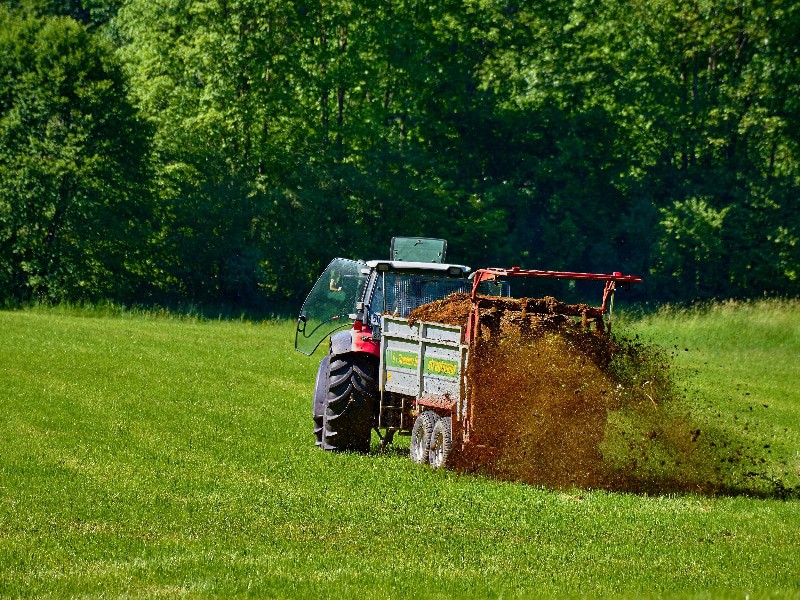You can learn how to measure fertilizer using various formulas and consider the application rate and nutrient content. Remember that more than the fertilizer concentration, the amount itself plays a significant role in the success of your garden. You have factors to consider to measure the fertilizer you’ll need; otherwise, it won’t be effective.
The effects you want from fertilizing will be hard to achieve if you apply the amount blindly. More so, the New Mexico State University recommends testing your soil first to determine or create the ideal fertilizer for your plant or area. The combination of the right amount and content of fertilizer should get you the most of it.

How To Measure Fertilizer For Beginners
Get the square footage of your area and fertilizer recommendations
The Utah State University calculates the amount of fertilizer you’ll need based on your area’s square footage. What if it’s challenging to get the square footage of the location? The extension also provides the formulas you can use for various shapes of the landscape.
Once you have the square footage, the next step is to get a soil test. This way, you can feel secured with the appropriate nutrient recommendations. Remember that these two factors are what you’ll use for the equation provided by the extension. The Oregon State University simplifies this formula by using the recommended quantities of fertilizer every 100 square feet.
Once you have the numbers, remember that you also have to consider if you’re fertilizing a small garden, flower bed, or a large field. You will need to convert the amount to the appropriate measurement or use tools such as measuring cups, which are more suitable for smaller areas. More so, do not neglect to learn about fertilizer application rates and nutrient content.
Measure the fertilizer application rate
As mentioned earlier, the first step before working with fertilizers is doing a soil test. Also, keep the major nutrient needs of your crops and plants in mind. In general, you can apply 0.1 to 0.2 pounds per 100 square feet of nitrogen, and the phosphorus and potassium content of the fertilizer depends on your soil to prevent problems with excess salt.
Suppose you’re still confused with the formula explained earlier. The central concept is having the square feet and dividing the recommended amount of nutrients for your plants by the nutrient in the fertilizer. You can get the nutrient amount in your fertilizer by multiplying the bag’s weight by the percentage of each nutrient.
You can always check the more detailed formulas of university extensions as well.
Measure the fertilizer nutrient content
As you have previously read, the nutrient content is also an influential factor in measuring fertilizer. This isn’t a daunting task because you have all the information you need, and you’ll just need to compute them. For example, if you have a 50-pound bag of 10-10-10 fertilizer, you’ll only multiple 50 by each number. The NPK ratio is the succession of numbers, so the first one is the nitrogen, phosphorus, and potassium.
You must calculate the nutrient content and amount of fertilizer before using it. These steps in measuring a fertilizer will prevent problems such as burnt roots and shoots. More so, you might not be solving any deficiencies if you are blindly applying fertilizer.
To give you a general idea of these fertilizer nutrients, think of nitrogen as what you’ll need to encourage foliage growth. The next number in the NPK ratio, phosphorus, helps with rooting and flowering. Lastly, potassium helps with plant health and protection against diseases.
With this in mind, seeing a 10-5-5 fertilizer means it is high in nitrogen, and you’ll use it to encourage leafy growth. On the other hand, you can enhance your plants’ bloom with a 5-10-5 fertilizer since the second number has a high amount.
How To Apply Fertilizer
There are many methods to apply fertilizer, and if you’re using a greenhouse, you might even find it more convenient to do maintenance practices like this. The consistent environment is also supportive of growth, and you can quickly check any potential problems once you saw signs in your plants. This way, you’re not overwhelmed with the possible causes.
You can apply fertilizer by either broadcasting, banding, and side-dressing. Broadcasting is the most common application recommendation in fertilizers, so if you don’t see an application method, you can assume you’ll apply it by broadcasting. Broadcasting, from the name itself, is simply scattering fertilizer over the surface.
On the other hand, banding requires placing the fertilizer in a trench, and side-dressing is where you scatter fertilizer closely around the growing plants. With the latter method, be careful with the fertilizer touching the leaves to avoid burning. More so, some fertilizer will require incorporation onto the soil.
Conclusion
The fertilizer will only be useful if you test your soil and learn your plants’ requirements. More so, you need to know how to measure fertilizer, whether it’s the amount you need to apply or the nutrient content suitable for your plants. In general, you can use different conversions and formulas recommended by universities to get the amount of fertilizer you need for your area.
Being sure of the amount, rate, and content of the fertilizer will prevent potential burning and deficiencies. You’ll also get the most of the product by doing calculations before application.
